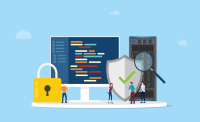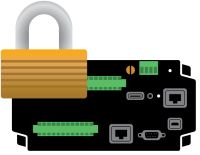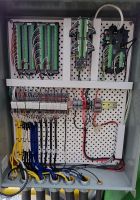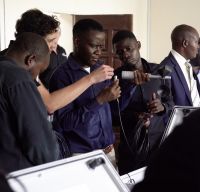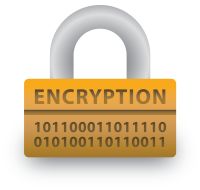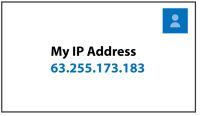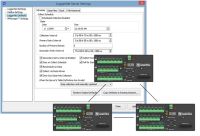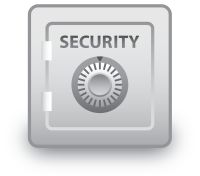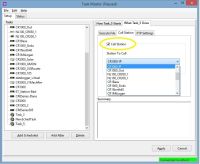Configuration Topics Your source for configuration-related articles
Displaying 1 - 16 of 16 articles
How to Keep Your Data Safe with PakBus® Encryption: Part 3
Author: Shaurya Rastogi | Last Updated: 12/15/2025 | Comments: 0
In this third and final blog article in the series, I'll share with you some more practical steps that you can take to keep your automated monitoring platform secure. If you missed my first article about PakBus encryption or want to review it again, please... read moreHow to Keep Your Data Safe with PakBus® Encryption: Part 2
Author: Shaurya Rastogi | Last Updated: 11/17/2025 | Comments: 0
In this second blog article in the series, I'll share with you additional practical steps that you can take to keep your automated monitoring platform secure. If you missed my first article about PakBus encryption or want to review it again, please read How to... read moreHow to Keep Your Data Safe with PakBus® Encryption: Part 1
Author: Shaurya Rastogi | Last Updated: 11/03/2025 | Comments: 0
In today’s connected world, protecting your data is more important than ever, especially when it comes to environmental, industrial, or scientific monitoring. If you’re using an automated monitoring platform (also known as a data-acquisition system or data logger) from Campbell Scientific, strong security practices safeguard... read moreHow to Use Data Logger Security Codes
Author: Janet Albers | Last Updated: 03/04/2025 | Comments: 4
Security codes are the oldest method of securing a data logger. They can effectively prevent innocent tinkering and discourage wannabe hackers—actions that could potentially wreak havoc on the integrity of your data. In this article, I’ll discuss the different security codes and how to use... read moreHow do you know if your CR6 is maxed out?
Author: Eric Schmidt | Last Updated: 02/18/2025 | Comments: 1
Just how many AM16/32B multiplexers can you really add to your CR6 Automated Monitoring Platform? At what point do you hit the limit? What is truly safe? As an Application Engineer in Campbell Scientific’s Infrastructure Group, I get a lot of customer questions about squeezing the... read moreWhat You Should Know About Our New Training Option
Author: Jacob Davis | Last Updated: 09/10/2024 | Comments: 2
The Campbell Scientific Learning Center is launching as a third training option, bringing self-paced learning to our customers. I am excited for this opportunity to expand our training availability beyond our current offerings: live, in-person training and live, online training. I hope you can take advantage... read moreHow to Equip Your Workforce for Success Through Training
Author: Vim Mistry | Last Updated: 03/25/2024 | Comments: 0
Continuous learning in the environmental monitoring industry empowers individuals and organizations alike, fostering innovation, user engagement, and a growth mindset. If you haven’t read our “How Do You Put Learning into Action?” blog article, I encourage you to do so. In this article, we’ll shift... read moreHow Do You Put Learning into Action?
Author: Vim Mistry | Last Updated: 03/11/2024 | Comments: 0
While continuous learning in the field of environmental monitoring is important, it’s even more critical to put that learning to practical use. Understanding the benefits for both employees and organizations to stay up to date on technology, expand expertise, and improve performance is one thing.... read more4 Reasons Why Continuous Learning Is Critical for Environmental Monitoring
Author: Ramatoulaye Nabi | Last Updated: 02/01/2024 | Comments: 0
In the ever-evolving landscape of environmental monitoring, staying ahead of the curve is not just a luxury but a necessity. As technology advances at an unprecedented pace, organizations must equip their employees with the skills and knowledge to effectively use emerging tools and navigate the... read moreHow Safe Are Your Campbell Scientific Devices from KRACK?
Author: Jacob Davis | Last Updated: 12/22/2017 | Comments: 0
Just recently, the KRACK (Key Reinstallation AttaCK) Wi-Fi vulnerability was publicized. You might be wondering what it is and how it affects the security of your Campbell Scientific devices and data. The KRACK vulnerability exists in the WPA2 (Wi-Fi Protected Access II) security standard used on... read moreAvailable Security Measures for Internet-Connected Data Loggers
Author: Dana Worley | Last Updated: 12/07/2016 | Comments: 2
The Internet of Things offers a lot of advantages in today’s culture. There are consumer devices that let you monitor and control mood lighting and music in your home, keep track of last week’s leftover dinner in your refrigerator, and help you brew a cup... read moreThe Many Possibilities of PakBus Networking
Author: Jacob Davis | Last Updated: 10/12/2016 | Comments: 6
What do you do if you have two data loggers installed really close to each other and you only want to pay the bill for running one cellular modem? How do you get data from both data loggers using a single modem? How do you... read moreIP Communication Basics for Data Logger Users
Author: Jacob Davis | Last Updated: 10/14/2015 | Comments: 0
Are you configuring your data logger but confused about all the IP (Internet Protocol) settings? Do you know what the settings mean and what you should set them to? Most of us data logger users do not have a background in computer science or network administration.... read moreSimplify Your LoggerNet Network Setup Using LoggerNet Defaults
Author: Dana Worley | Last Updated: 08/19/2015 | Comments: 0
Configuring a network of data loggers for communication and data collection in LoggerNet's Setup window can seem like an arduous and tedious task, but it doesn’t have to be. It’s true that you need to complete this task before you can use LoggerNet to connect... read more4 Ways to Make Your Data More Secure
Author: Jacob Davis | Last Updated: 07/15/2015 | Comments: 0
Your data is valuable, and sometimes that value is reduced if unauthorized users have access to it. For this reason, Campbell Scientific data loggers have numerous methods of restricting access to your data. This article is an overview of four available methods for securing your... read moreMake Your LoggerNet Data Collection More Flexible
Author: Dana Worley | Last Updated: 06/03/2015 | Comments: 0
If you are a user of our LoggerNet software, you know that the software can be configured to collect data from your data logger on a regular interval. From a data logger's Schedule tab in the Setup Screen, you can configure an interval of anywhere... read more











